Nepal 300 rupee
300 rupee, Rashtriya Banjiya bank silver jubilee 1990
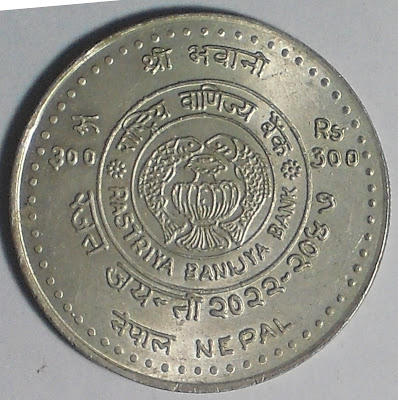 The legend reads Rashtriya Banjiya Bank Rajat jayanti 2022-2047, and also shows the bank logo. The Rashtriya Banjiya Bank, which translates to the National Bank of commerce, is to Nepal what the Reserve Bank is to India. The date converts to 1965-1990 AD, which means this one was released in 1990 on the occasion of silver jubilee of the Rashtriya Banijya Bank of Nepal.
The legend reads Rashtriya Banjiya Bank Rajat jayanti 2022-2047, and also shows the bank logo. The Rashtriya Banjiya Bank, which translates to the National Bank of commerce, is to Nepal what the Reserve Bank is to India. The date converts to 1965-1990 AD, which means this one was released in 1990 on the occasion of silver jubilee of the Rashtriya Banijya Bank of Nepal.
Date: 2047 VS = 1990 AD
Nepal Five rupee
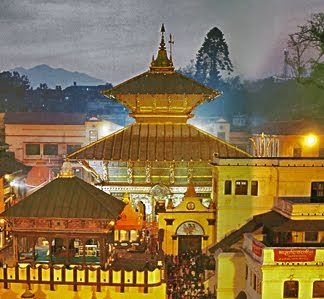 Pashupati is one of the epithets of Lord Shiva. It translates to "Lord of animals". Pashupatinath is the most important shrine for Hindus all over Nepal as well as in other countries including India. Only Hindus(who believe in Pashupati) are allowed to enter in the temple, and all people not born in Nepal or India are considered non-Hindus. Non-Hindus are allowed to have a look at the temple from the other bank of Bagmati river.
Pashupati is one of the epithets of Lord Shiva. It translates to "Lord of animals". Pashupatinath is the most important shrine for Hindus all over Nepal as well as in other countries including India. Only Hindus(who believe in Pashupati) are allowed to enter in the temple, and all people not born in Nepal or India are considered non-Hindus. Non-Hindus are allowed to have a look at the temple from the other bank of Bagmati river.According to the legend, it is not known for certain when the temple was founded, but it is said that Lord Shiva gained great fame here as Pashupati, or the Lord of the animals.
Five rupee, visit Nepal 1998
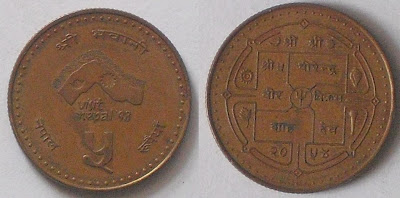
Nepal 2 rupee
Janki Temple, Nepal
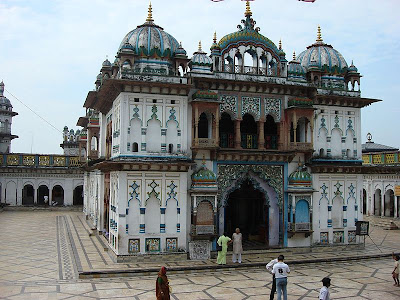
Two rupee, Janki Temple
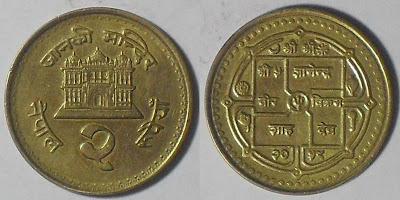 The Janki Temple was built by Queen Brisabhanu Kunwari of Tikamgarh in 1911. It is also known as the nau lakha mandir because it was built at the cost of 9 lakh rupees. The temple is dedicated to the goddess Sita as in 1657 a golden statue of goddess Sita was found there and Sita is also said to have lived there.
The Janki Temple was built by Queen Brisabhanu Kunwari of Tikamgarh in 1911. It is also known as the nau lakha mandir because it was built at the cost of 9 lakh rupees. The temple is dedicated to the goddess Sita as in 1657 a golden statue of goddess Sita was found there and Sita is also said to have lived there.It is also the epitome of Rajput architechture in Nepal.
Two rupee, Sagarmatha
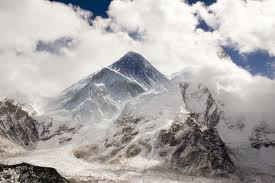 Sagarmatha is the Nepalese name for Mount Everest. For more details see under One rupee coin featuring Sagarmatha.
Sagarmatha is the Nepalese name for Mount Everest. For more details see under One rupee coin featuring Sagarmatha.
Visit Nepal 1998
Nepal 1 rupee - III
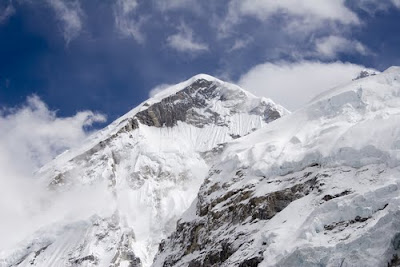 Sagarmatha is the Nepalese name of mount Everest, and it means "on top of the world". The other prominent attraction of the region is the Sagarmatha national park, which has been declared as a world heritage site by UNESCO. The Sagarmatha national park is one of the most beautiful places on Earth, where plants grow and flowers bloom rapidly after the monsoons, and the region becomes green in a short period of time. Lots of insects and birds which feed on them can also be found here. The park also boasts of being home to quite a few endangered species like the Red Panda(think the Jungle book), the elusive snow leopard, musk deer(known for its scent), wild yak and the Himalayan Black bear.
Sagarmatha is the Nepalese name of mount Everest, and it means "on top of the world". The other prominent attraction of the region is the Sagarmatha national park, which has been declared as a world heritage site by UNESCO. The Sagarmatha national park is one of the most beautiful places on Earth, where plants grow and flowers bloom rapidly after the monsoons, and the region becomes green in a short period of time. Lots of insects and birds which feed on them can also be found here. The park also boasts of being home to quite a few endangered species like the Red Panda(think the Jungle book), the elusive snow leopard, musk deer(known for its scent), wild yak and the Himalayan Black bear.It may be noted that Sagar is a Sanskrit word meaning sky, and it is not to be confused with the Hindi word Sagar which means sea or ocean and Matha means forehead. Hence we have Sagarmatha as the modern Nepali name for Mount Everest.
One rupee, 50 years of UN
Nepal 1 rupee - II
Gorkhapatra centenary 1 Rupee
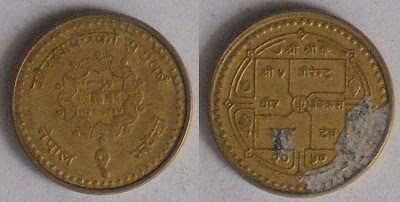 This coin was issued to celebrate the completion of 100 years of the Gorkhapatra, which is a newspaper in Nepal. The figure on the obverse shows some people reading a newspaper, which is intended to be the Gorkhapatra, the oldest national daily newspaper of Nepal and run by the Gorkhaptra sansthan. This coin was released in AD 2000 which means that the Gorkhapatra was started in 1900 AD.
This coin was issued to celebrate the completion of 100 years of the Gorkhapatra, which is a newspaper in Nepal. The figure on the obverse shows some people reading a newspaper, which is intended to be the Gorkhapatra, the oldest national daily newspaper of Nepal and run by the Gorkhaptra sansthan. This coin was released in AD 2000 which means that the Gorkhapatra was started in 1900 AD.
1 Rupee, Visit Nepal 1998
Nepal 1 rupee - I
Nepal 50 paisa
Swayambhu Mahachaitya
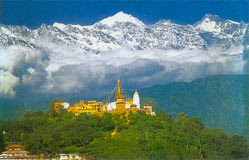
50 paisa, 2004
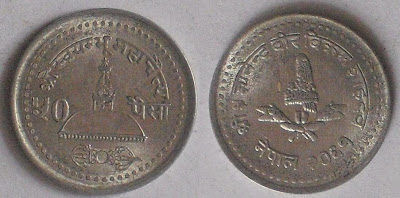 Weight: 1.41gm
Weight: 1.41gmMetal : Aluminium
Diameter: 22.5mm
Obverse: dome of swayambhu maha chaitya
Reverse: crown
Date: 2061 VS=2004AD
The lettering above the crown on obverse reads "shree swayambhu maha chaitya".Swayambhu is a pilgrimage centre in the Kathmandu valley revered by Hindus and Buddhists, by people of Nepal, India, Bhutan and china. From almost all parts of the Kathmandu valley, we can see beautiful views of the Swayambhu hill, which is also known as “Gopucchha” and ”Gosringa” hill because it looks like a tail or horn of a cow when one observes it from the Chobhar hill.
The site of Swayambhu mahachaitya is very beautiful where many old botanical species grow.
According to the legend, the Vipaswi Buddha came to a lake here and sowed a lotus seed here.From the flower that bloomed, swayambhujyoti(sele originated flame) is said to have emanated. On hearing about the flame, pilgrims started coming to the place. One of the pilgrims, Mahamanjushree cut out a slit at the hill at Chobar with the hel of his spouses Varada and Mokshyada, and dried out the lake to make it suitable for human settlement. At the site where the Swayambhu jyoti had emerged, a stupa was created which came to be known as the Swayambhu mahachaitya.
There is no proper archaeological evidence to support the legend, although geology does confirm that the valley originated from a lake. It can be assumed that after the lake dried up, human settlement began in the region about 1000 years ago, based on the stories in the puranas and the local chronicles.
The site of Swayambhu mahachaitya is very beautiful where many old botanical species grow.
According to the legend, the Vipaswi Buddha came to a lake here and sowed a lotus seed here.From the flower that bloomed, swayambhujyoti(sele originated flame) is said to have emanated. On hearing about the flame, pilgrims started coming to the place. One of the pilgrims, Mahamanjushree cut out a slit at the hill at Chobar with the hel of his spouses Varada and Mokshyada, and dried out the lake to make it suitable for human settlement. At the site where the Swayambhu jyoti had emerged, a stupa was created which came to be known as the Swayambhu mahachaitya.
There is no proper archaeological evidence to support the legend, although geology does confirm that the valley originated from a lake. It can be assumed that after the lake dried up, human settlement began in the region about 1000 years ago, based on the stories in the puranas and the local chronicles.
Nepal set: 400 years of Guru Granth Sahab
Nepal 250 rupees: 400 years of guru granth sahab obverse
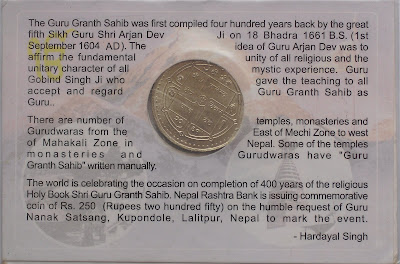
Nepal 250 rupees : 400 years of guru granth sahab
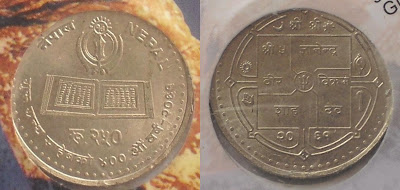 This coin was released in Nepal on the completion of 400 years of Guru Granth Sahab, the holy book of the Sikhs. Sri Guru Granth Sahib, or Adi Granth, is the religious text of Sikhism. It is the final and eternal guru of the Sikhs.It is a voluminous text of 1430 angs, compiled and composed during the period of Sikh gurus, from 1469 to 1708. Guru Granth Sahab was completed and installed in Harmandir Sahib in 1604, and this coin was released in 2004, after 400 years of the inauguration of Guru Granth Sahib ji. The date on the coin is VS 2061=2004 AD
This coin was released in Nepal on the completion of 400 years of Guru Granth Sahab, the holy book of the Sikhs. Sri Guru Granth Sahib, or Adi Granth, is the religious text of Sikhism. It is the final and eternal guru of the Sikhs.It is a voluminous text of 1430 angs, compiled and composed during the period of Sikh gurus, from 1469 to 1708. Guru Granth Sahab was completed and installed in Harmandir Sahib in 1604, and this coin was released in 2004, after 400 years of the inauguration of Guru Granth Sahib ji. The date on the coin is VS 2061=2004 ADThe Adi Granth was first compiled by Guru Arjan Dev (1563–1606),the fifth Guru of the Sikhs from hymns of the first five Sikh gurus and other great saints, or bhagats, including those of the Hindu and Muslim faith. After the demise of the tenth Sikh guru many edited copies were prepared for distribution by Baba Deep Singh.
It is written in the Gurmukhī script, predominantly in archaic Punjabi, with occasional use of other languages including Braj Bhasha, Khariboli, Sanskrit and Persian, often coalesced under the generic title of Sant Bhasha.
The numerous holy men other than the Sikh Gurus whose writing were included in the Adi Granth are collectively referred to as Bhagats "devotees" and their writings are referred to as Bhagat bani"Word of Devotees". These saints belonged to different social and religious backgrounds, including Hindus and Muslims, cobblers and untouchables. Though Sri Guru Granth Sahib Ji contains the compositions of both Sikh Gurus as well the other great saints (Bhagats)—including those of the Hindu and Muslim faith—no distinction whatsoever is made between the works of Sikh Gurus and the works of the Bhagats contained within the Siri Guru Granth Sahib; the titles "Guru" and "Bhagat" should not be misleading. Guru Granth Sahib is said to be the sole and final successor of the line of gurus.
Apart from the Bani of the gurus, guru Granth Sahib ji also contains verses by the Bhagats Kabir(Muslim weaver), Namdev(Calico printer from Maharashtra), Ravi Das(Shoe maker from Uttar Pradesh), Dhanna(cultivator from Rajasthan), Sain(barber from Uttar Pradesh), Jaidev(poet from Bengal), Pipa(king from Uttar Pradesh), Sur Das(blind poet), Baba Farid(Muslim saint from Punjab), Parmanand(Maharashtra), Sadhna(butcher from Sindh), Beni, Ramanand(Uttar Pradesh) and Bhikhan(Sufi saint from Uttar Pradesh).
Posted By :Shubham Gupta
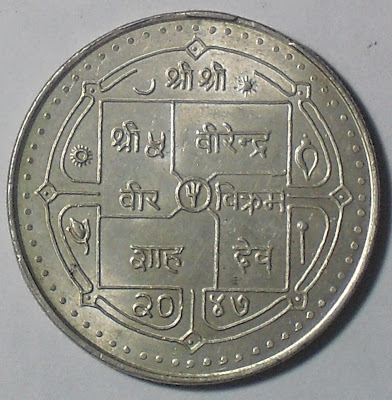
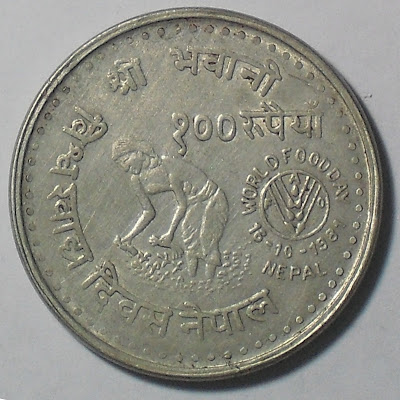
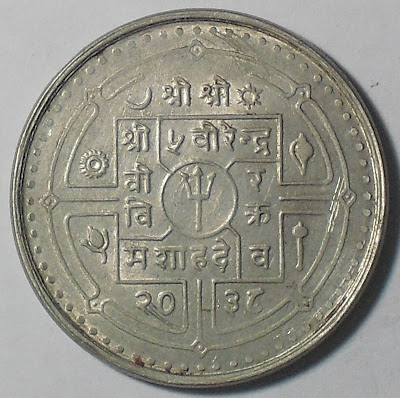
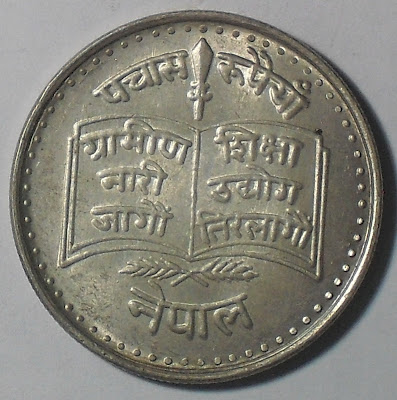
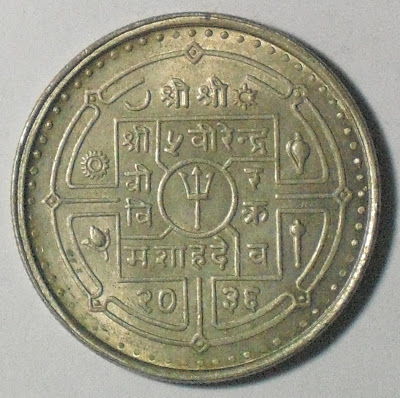
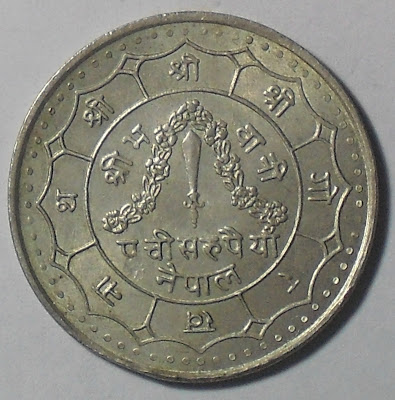
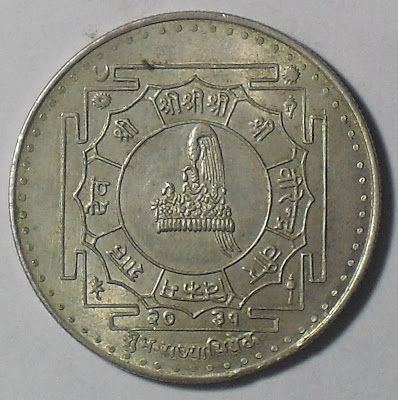
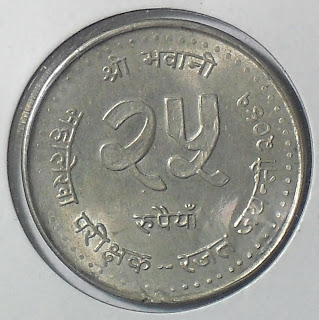
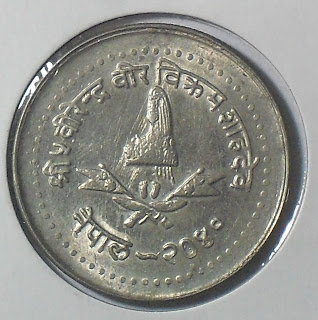
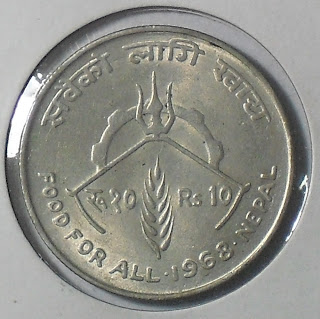
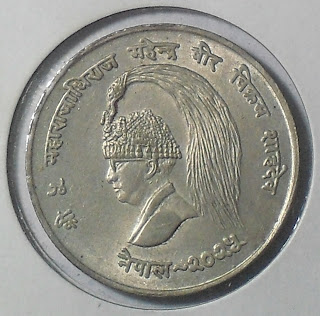
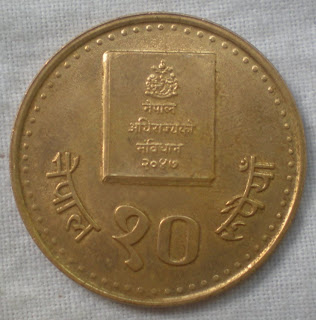
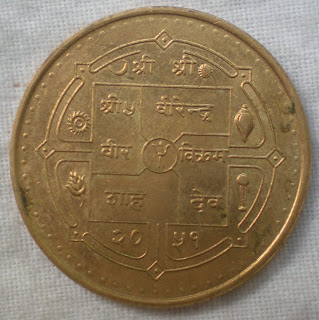
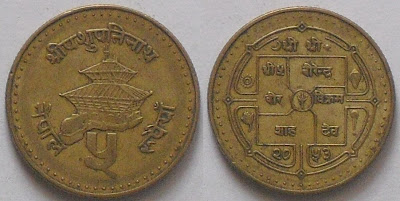
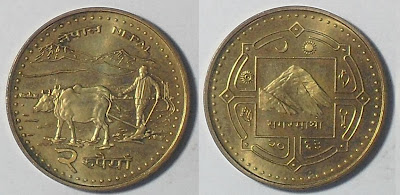

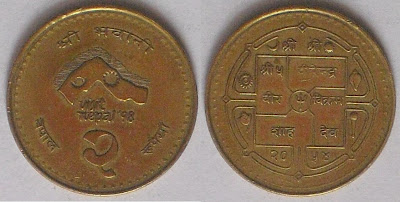
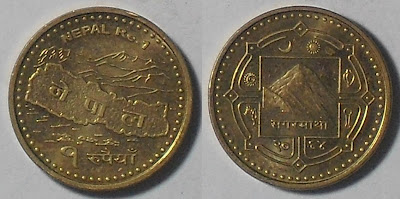
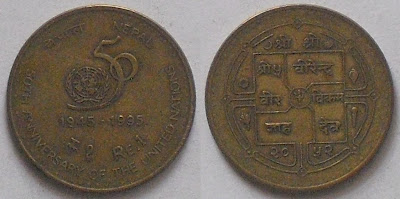
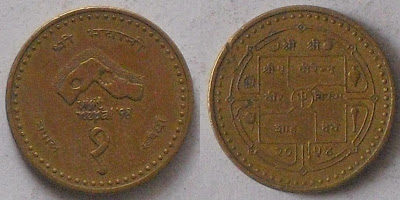
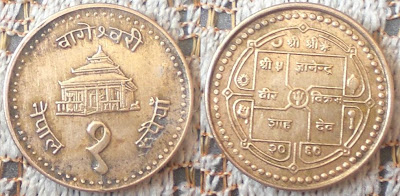
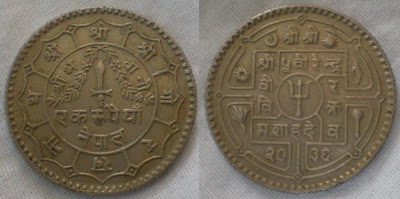
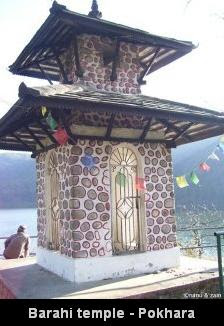
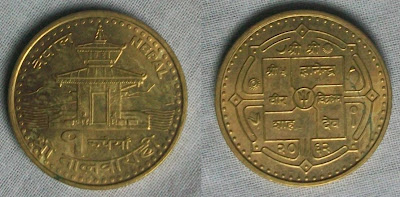
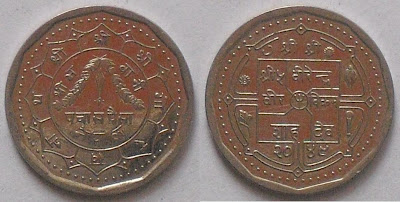
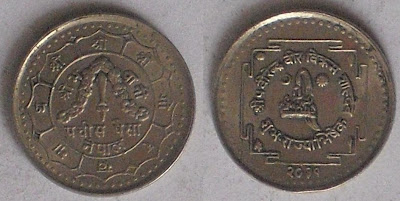
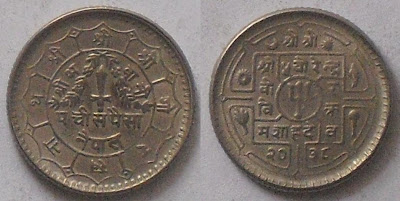
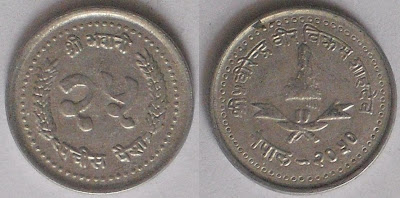
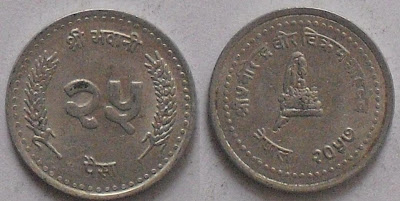
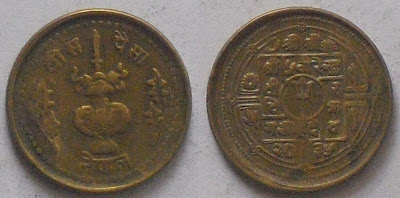
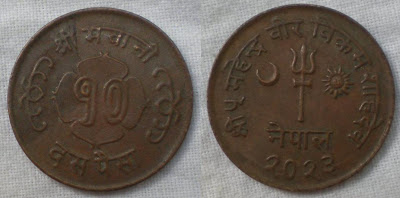
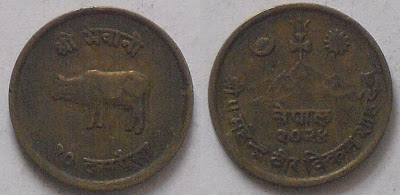
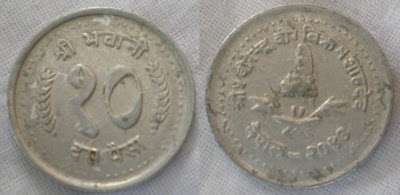
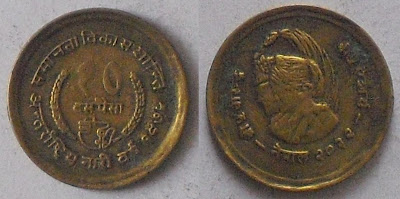
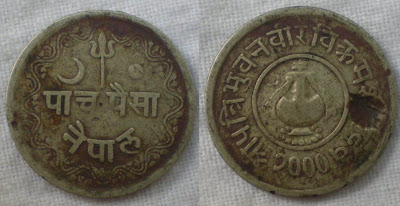
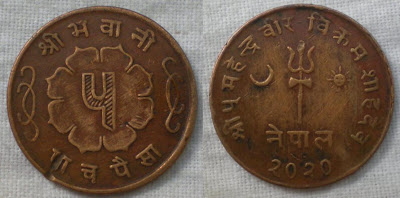
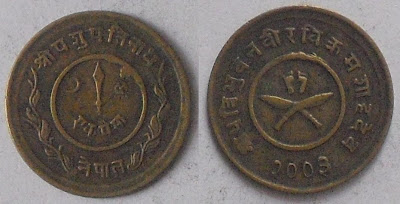
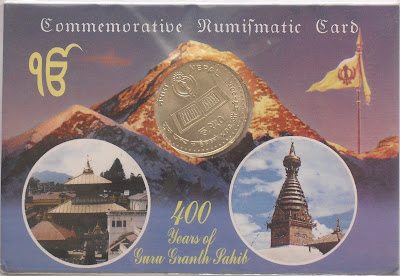



No comments:
Post a Comment